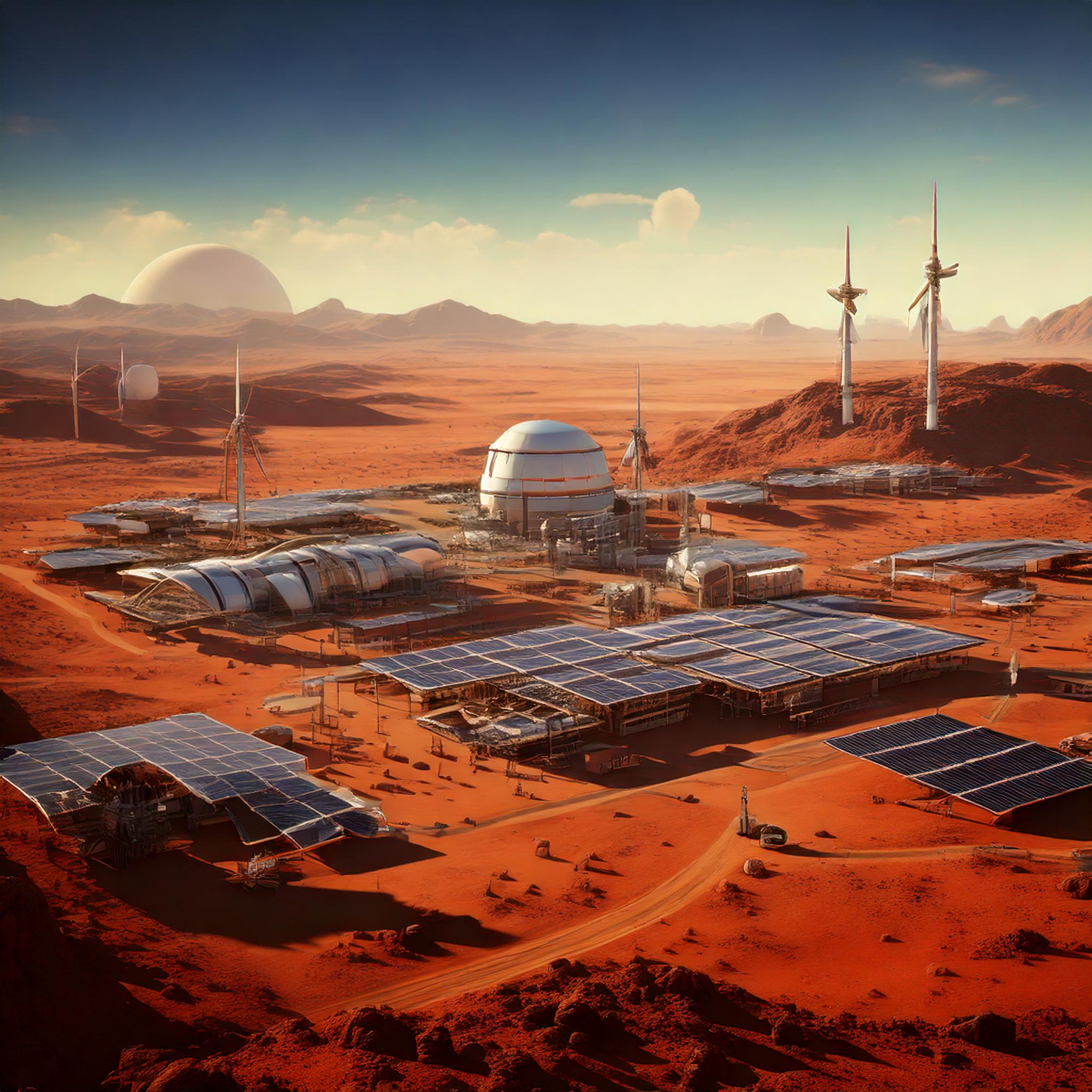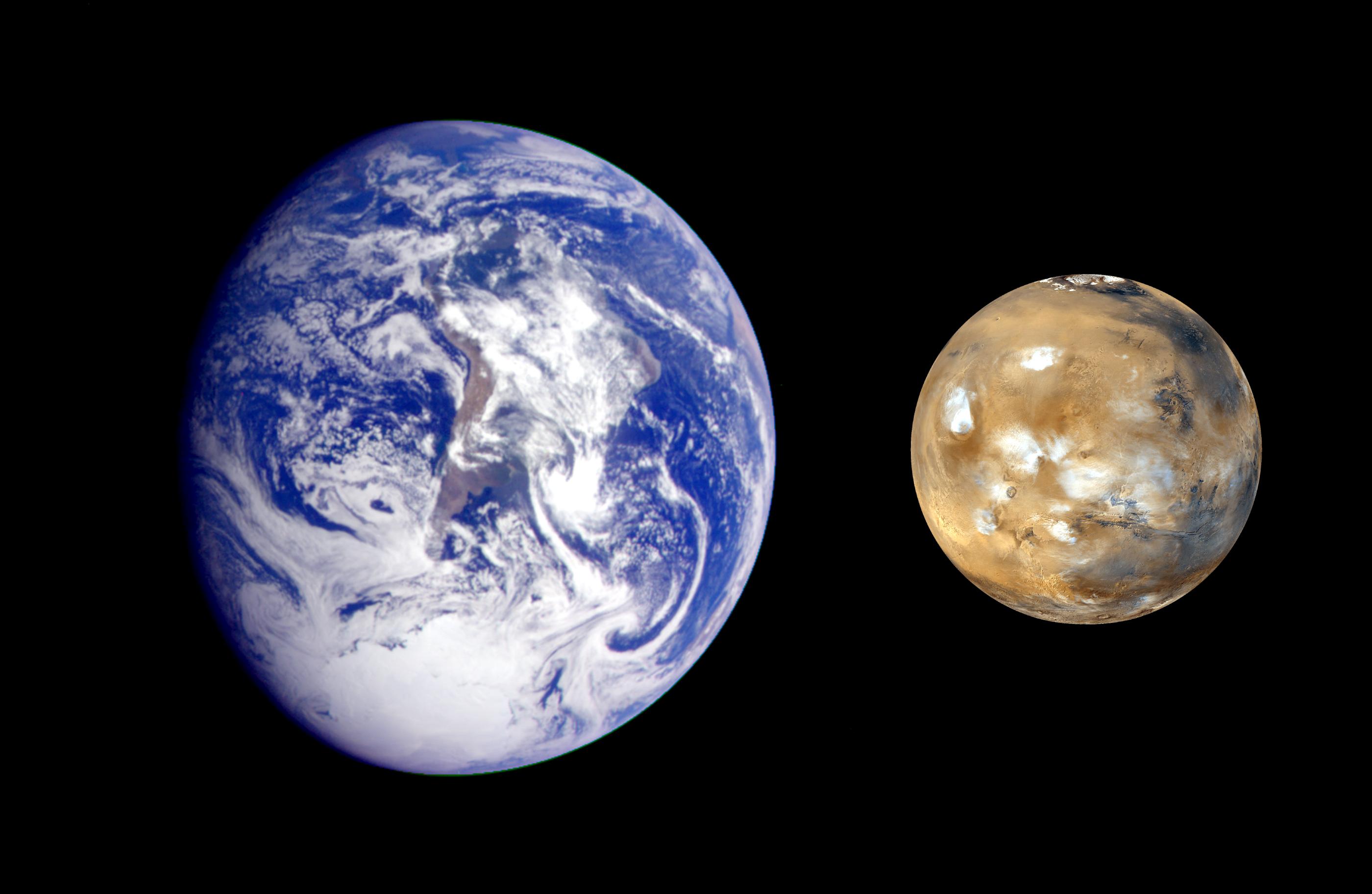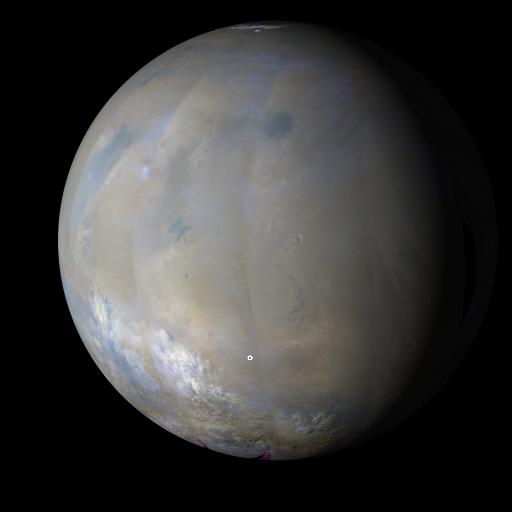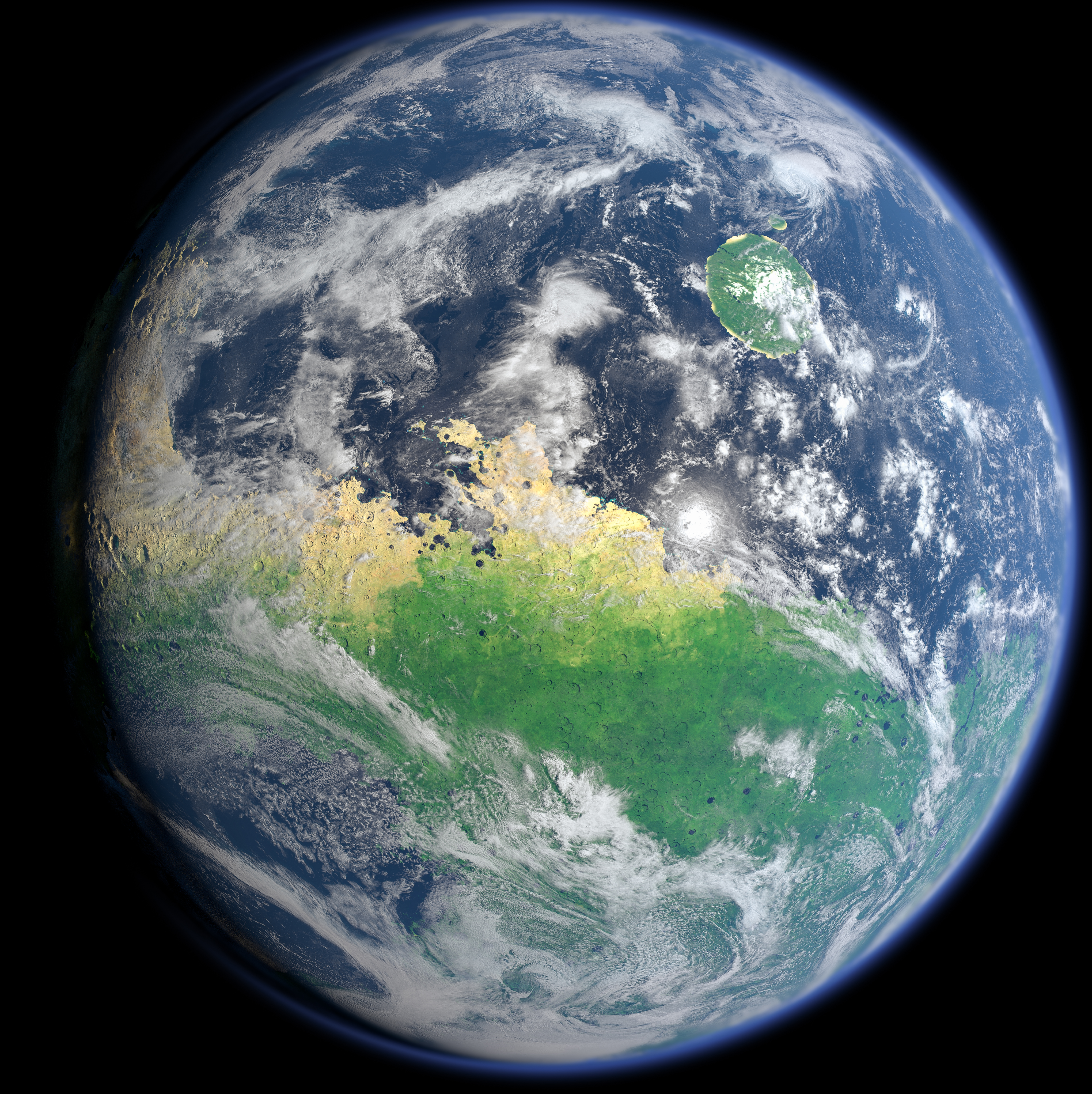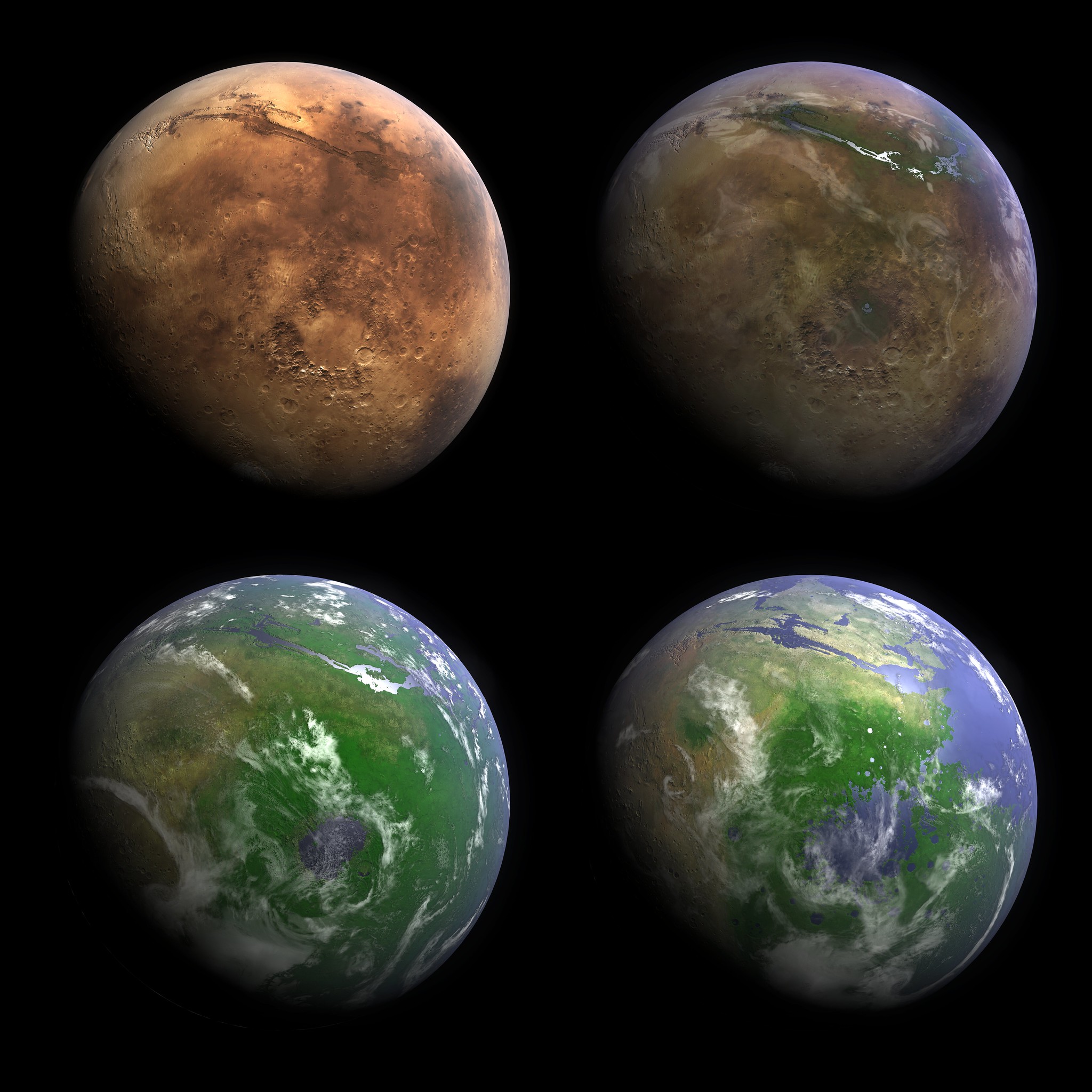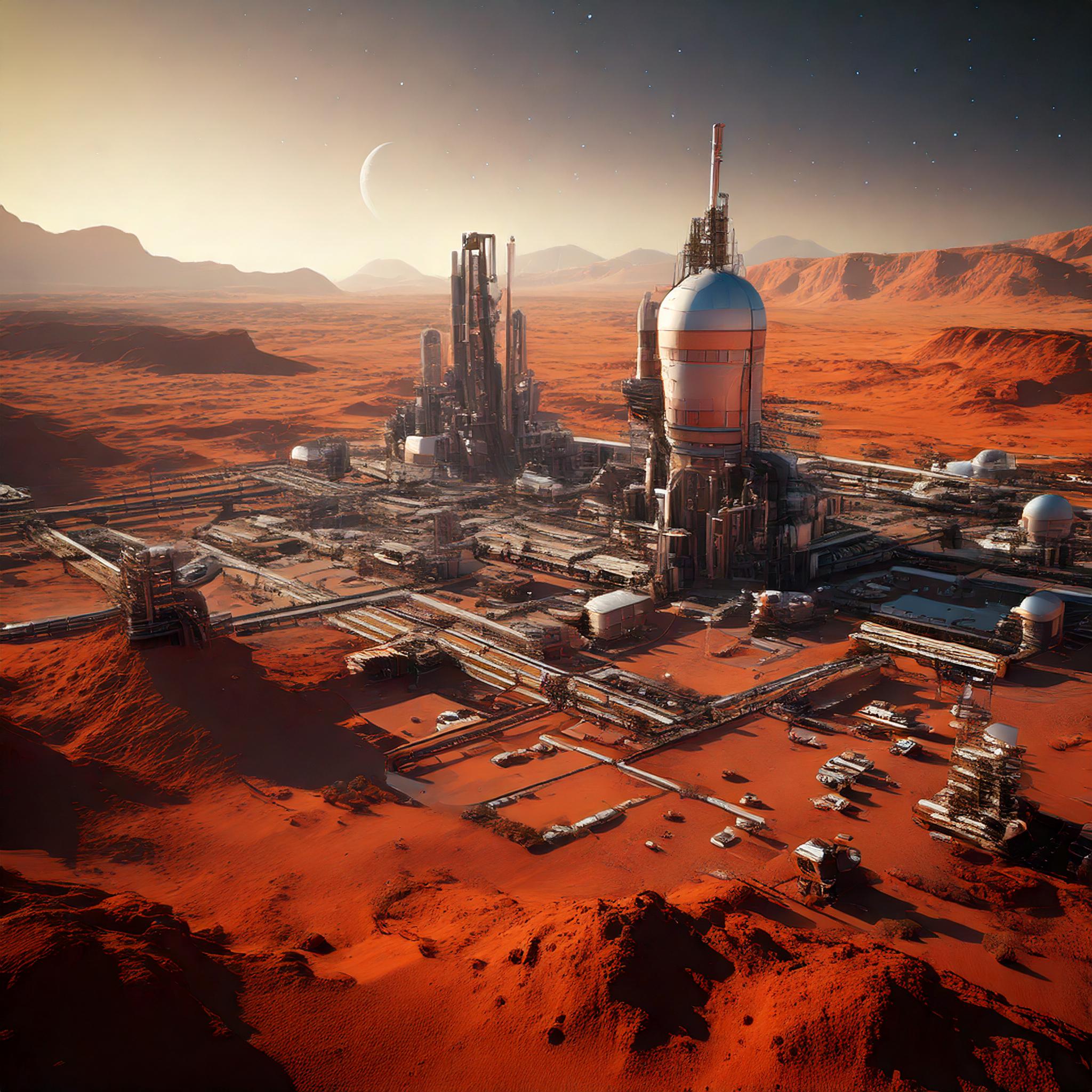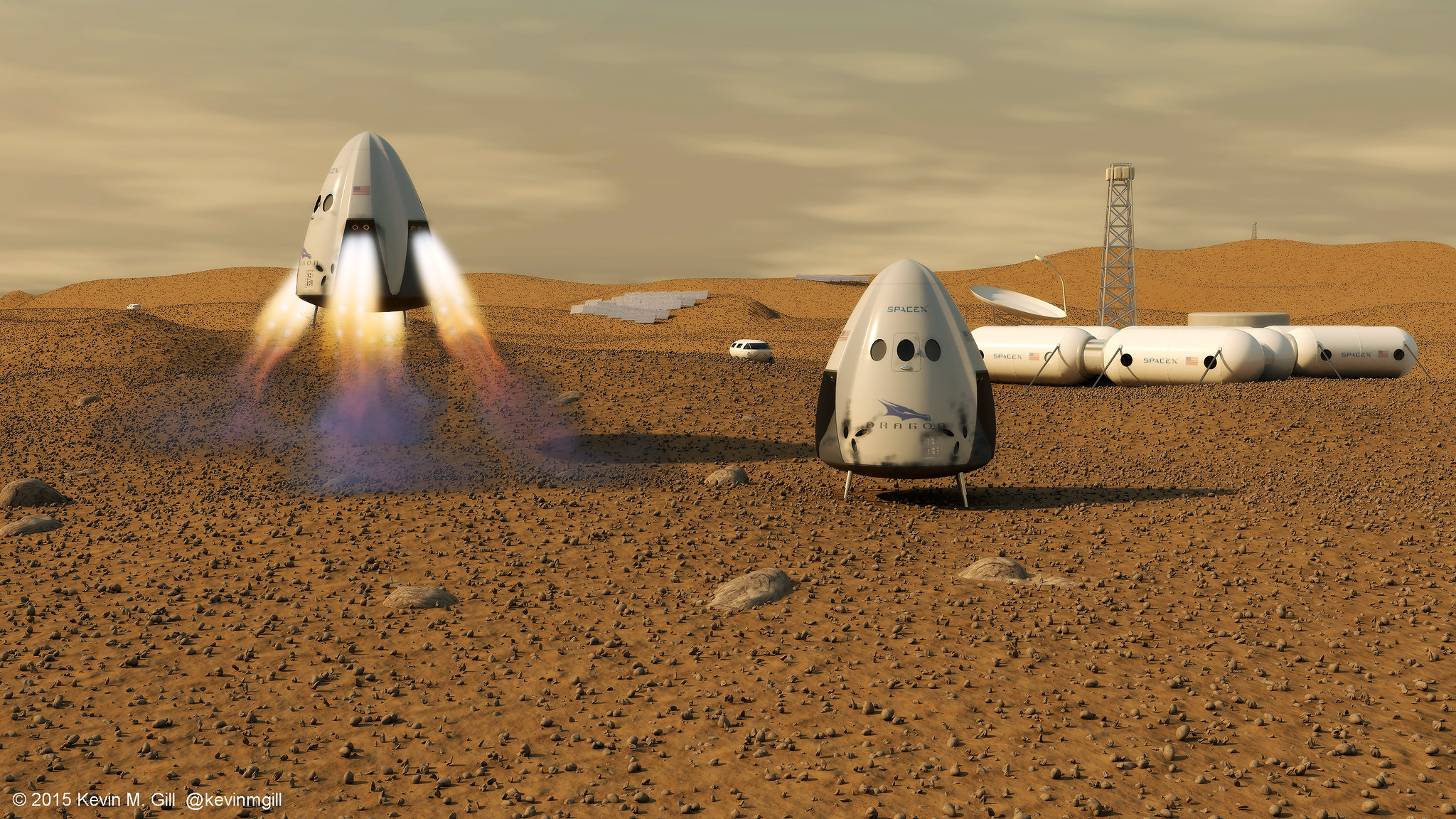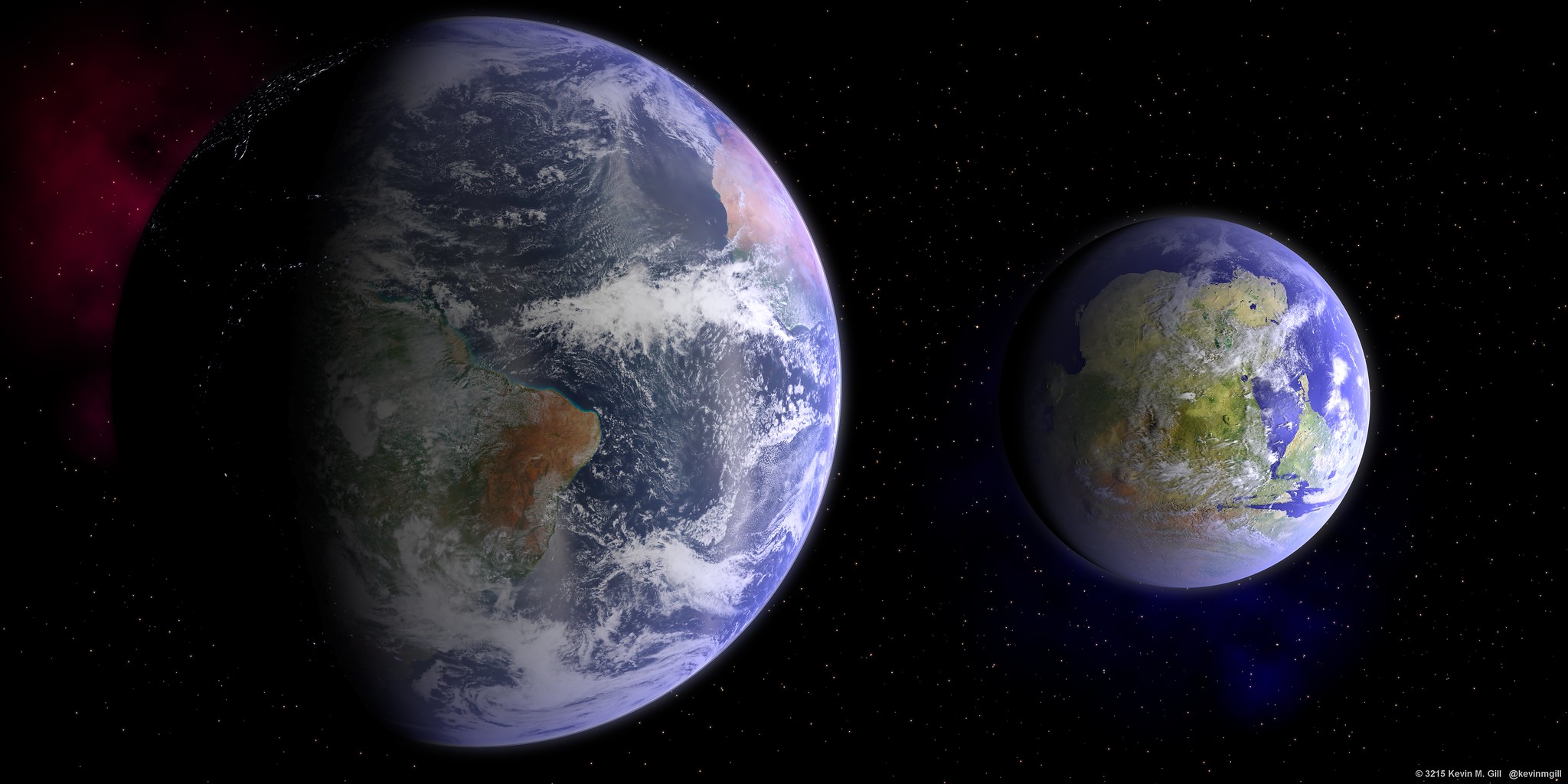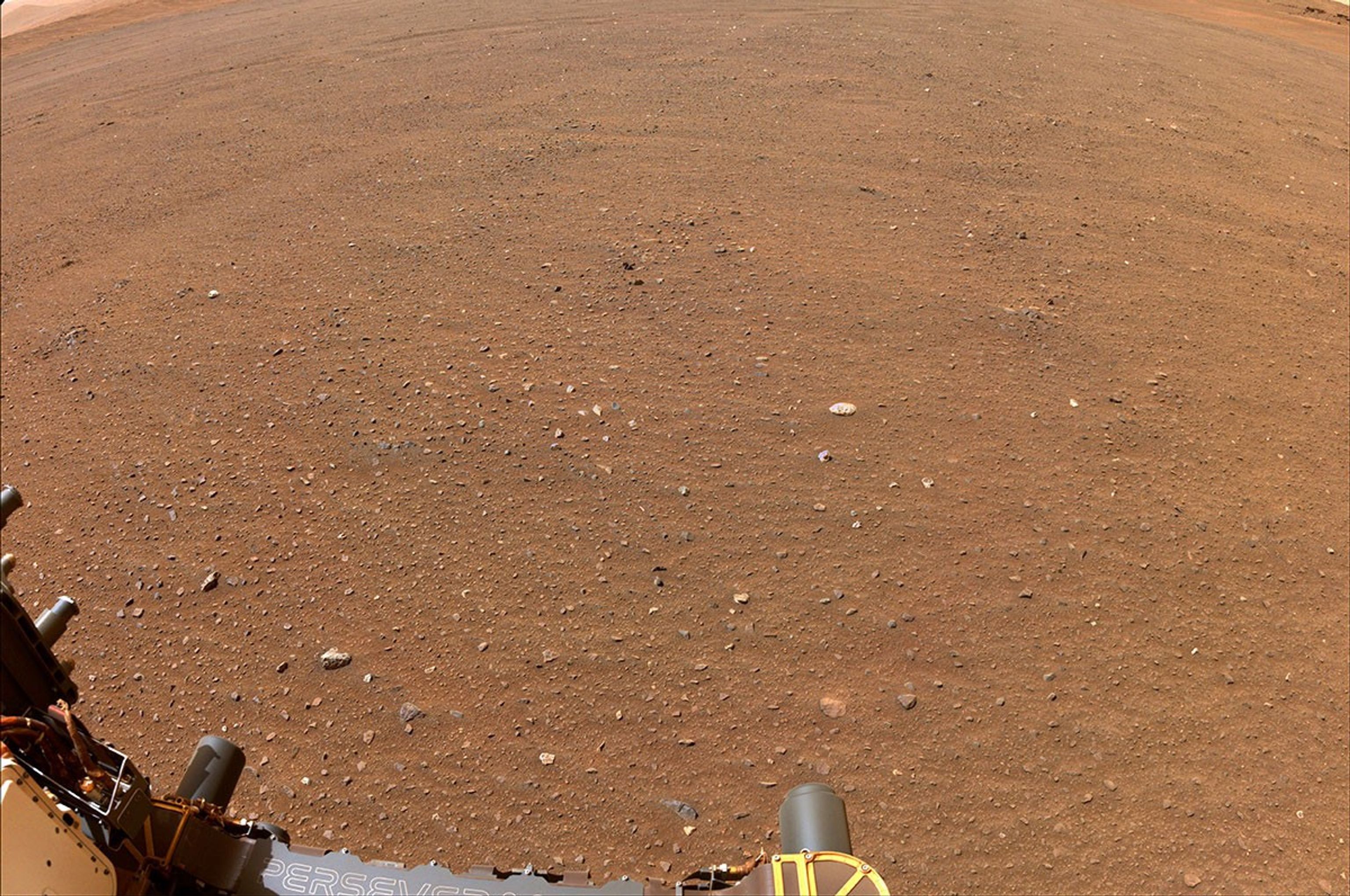Mars "The Red Planet"
Overview
| Location: | Fourth planet from the Sun. 227.9 million km (141.6 million miles) or 1.52 AU from Sol. |
|---|---|
| Size: | 6,779 km (4,212 miles). 1/2 the size of Earth. |
| Surface Temperature: | ~20°C (68°F) during the day near the equator to -125°C (-195°F) at night near the poles. |
| Athmospheric Composition: | Carbon dioxide (CO₂): ~95.3% / Nitrogen (N₂): ~2.7% / Argon (Ar): ~1.6% / Trace amounts of oxygen and water vapor. |
| Athmospheric Pressure: | 0.6% of Earth's (very thin) |
| Orbital Duration: | 24 hours, 39 minutes, and 35 seconds (slightly longer than an Earth day) |
| Named After: | Mars (Roman God of War) |
| Remarks: | No Global Magnetic Field: Mars lacks a magnetic field like Earth’s. However, certain regions in the crust retain remnants of ancient magnetism. Mars is easily visible to the naked eye from Earth as a bright reddish "star." In Science Fiction, Mars has been central to many works, including "The War of the Worlds" by H.G. Wells and "The Martian" by Andy Weir. |
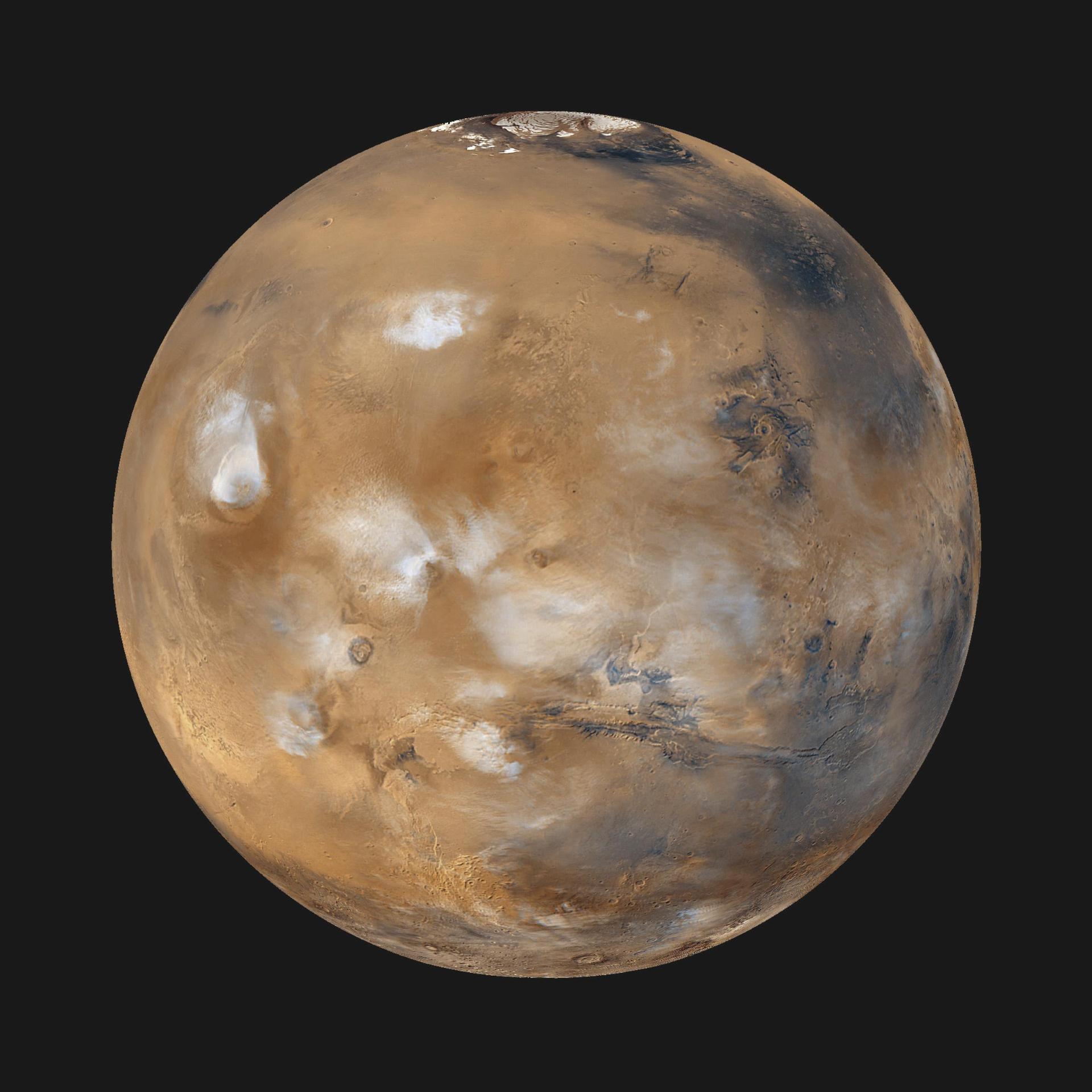
Overview
Mars, the fourth planet from the Sun, has captivated human imagination for centuries. Often called the "Red Planet" due to its reddish hue from iron oxide on its surface, Mars is both similar to Earth in some ways and starkly different in others. It holds a unique place in our solar system and our quest for understanding the universe.
One of the most intriguing aspects of Mars is its potential to support life. Ancient river valleys and lakebeds suggest the planet once had liquid water and possibly a warmer climate. In modern times, traces of water exist as ice and, occasionally, as briny liquid under the surface. However, the lack of a strong magnetic field and a thin atmosphere make current conditions inhospitable for Earth-like organisms.
Mars has been a focus of space exploration for decades. Robotic explorers like NASA’s Perseverance rover and the Mars Reconnaissance Orbiter have revealed invaluable information about the planet’s geology, atmosphere, and potential habitability. Plans for human exploration are underway, with organizations like NASA and SpaceX aiming to establish a long-term presence on Mars in the future.
Mars represents the next frontier for humanity. Its alien landscapes, scientific mysteries, and potential as a future home make it a beacon of curiosity and ambition. As we continue to explore the Red Planet, it promises to unlock secrets about the history of our solar system and our place within it.
Imagining a Colony on Mars
Establishing a human colony on Mars has long been a dream of scientists, explorers, and visionaries. With recent advancements in technology and a growing interest in space exploration, this once distant dream is inching closer to reality. A colony on Mars would be unlike anything humanity has experienced, blending scientific ingenuity, resilience, and adaptability to survive on an alien world.
A Mars colony would likely begin as a small settlement designed to support a handful of astronauts or researchers. Habitats would need to be self-sufficient and capable of protecting inhabitants from Mars’ harsh environment. These structures would likely be domes or underground facilities made from materials brought from Earth or extracted from the Martian surface. The primary challenges would be shielding colonists from intense solar and cosmic radiation, maintaining stable temperatures, and providing breathable air in an atmosphere composed almost entirely of carbon dioxide. Advanced life-support systems would recycle air and water, while greenhouses or hydroponic farms would grow food.
As the colony grows, it could pave the way for a self-sustaining civilization. Terraforming Mars to make it more Earth-like is a distant possibility, but for now, humanity's focus would be on adapting to Mars' existing conditions. While life on Mars would undoubtedly be challenging, it also offers an unparalleled opportunity for growth, innovation, and survival beyond Earth.
Environmental Challenges
Establishing a settlement on Mars presents numerous environmental challenges due to its hostile and extreme conditions. These challenges would require innovative technologies and strategies to ensure the safety and sustainability of human habitation. Here are the key environmental challenges:
- Thin Atmosphere: The atmospheric pressure on Mars is less than 1% of Earth’s, which would cause unprotected humans to suffocate and fluids in the body to vaporize.
- Radiation Exposure: Unlike Earth, Mars lacks a global magnetic field to shield it from cosmic rays and solar radiation. The Health Risks from prolonged exposure to radiation increases the risk of cancer and neurological damage, among other problems.
- Extreme Temperatures: The wide temperature swings could strain habitats and equipment.
- Dust Storms: Mars experiences massive dust storms that can cover the entire planet and last for weeks or months. Dust storms reduce visibility, disrupt solar power generation, and can damage equipment with fine, abrasive particles.
- Soil Composition: Martian soil contains perchlorates, toxic compounds that pose a health risk and challenge agriculture.
Possible Colony Design
A Mars colony would likely begin as a small settlement designed to support a handful of astronauts or researchers. Habitats would need to be self-sufficient and capable of protecting inhabitants from Mars’ harsh environment. These structures would likely be domes or underground facilities made from materials brought from Earth or extracted from the Martian surface. The primary challenges would be shielding colonists from intense solar and cosmic radiation, maintaining stable temperatures, and providing breathable air in an atmosphere composed almost entirely of carbon dioxide. Advanced life-support systems would recycle air and water, while greenhouses or hydroponic farms would grow food.
As the colony grows, it could pave the way for a self-sustaining civilization. Terraforming Mars to make it more Earth-like is a distant possibility, but for now, humanity's focus would be on adapting to Mars' existing conditions. While life on Mars would undoubtedly be challenging, it also offers an unparalleled opportunity for growth, innovation, and survival beyond Earth.
Functionality and Purpose
A Mars colony represents more than a bold scientific experiment; it is a vision for the future of humanity. It combines the need for survival, the quest for knowledge, and the desire for expansion into a single transformative endeavor. The establishment of a human presence on Mars would not only redefine our understanding of life and the universe but also set the stage for humanity’s next great chapter as an interplanetary species.
- Ensuring the Survival of Humanity: Expanding beyond Earth is a step toward becoming a multiplanetary species, ensuring the long-term survival and evolution of humanity in the cosmos.
- Expanding Economic Frontiers: Mars and its moons may contain valuable materials, such as metals and minerals, that could eventually support industries both on Mars and Earth.
- Addressing Overpopulation and Resource Strain: A Mars colony could eventually help alleviate resource strain on Earth by providing new space for expansion and new sources of materials.
- Terraforming and Planetary Engineering: MMastering techniques to alter Mars’ environment would demonstrate humanity’s ability to adapt uninhabitable worlds for life.
- Exploring Deeper into Space: Mars colony could serve as a base for exploring deeper into the solar system, such as missions to Jupiter's moons, Saturn’s moons, and even interstellar travel.
Commercial and Industrial Exploitation
The exploitation of Mars’ resources, combined with the development of interplanetary commerce, could lead to a thriving space economy. While still speculative, the economic prospects of Mars exploitation offer opportunities in resource extraction, technological innovation, and long-term economic expansion:
- Minerals and Metals: Mars’ surface contains abundant iron, silicon, and other elements. Future mining operations could extract these materials for construction, manufacturing, and electronics.
- Mining Rare Earth Elements: While not yet proven, Mars might host rare materials such as platinum group metals, which are in high demand on Earth for industries like electronics and renewable energy.
- Space-Based Manufacturing: Low-Gravity Benefits, In-Situ Manufactoring and Specialized Goods could all boost a Martian Economy.
- Permanent Settlements: Over time, Mars could evolve into a desirable location for pioneers and entrepreneurs seeking to build a new life and establish businesses in a growing Martian economy.
- Terraforming: Being the easiest Planet in the Solar System for Terraforming, Mars could be a completely new Economy and Society with all its possibility after Terraforming Efforts have taken place.
